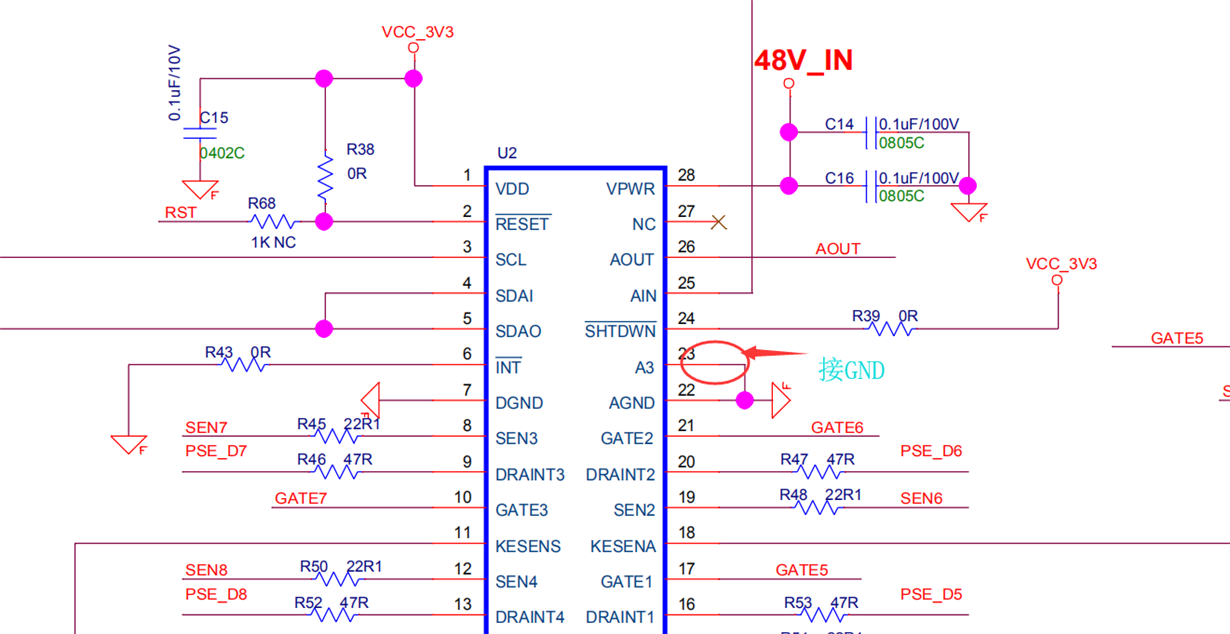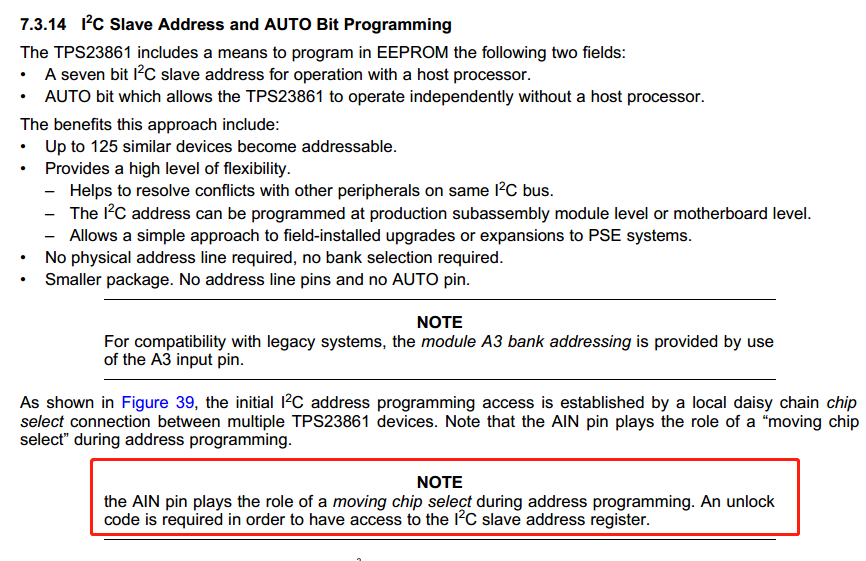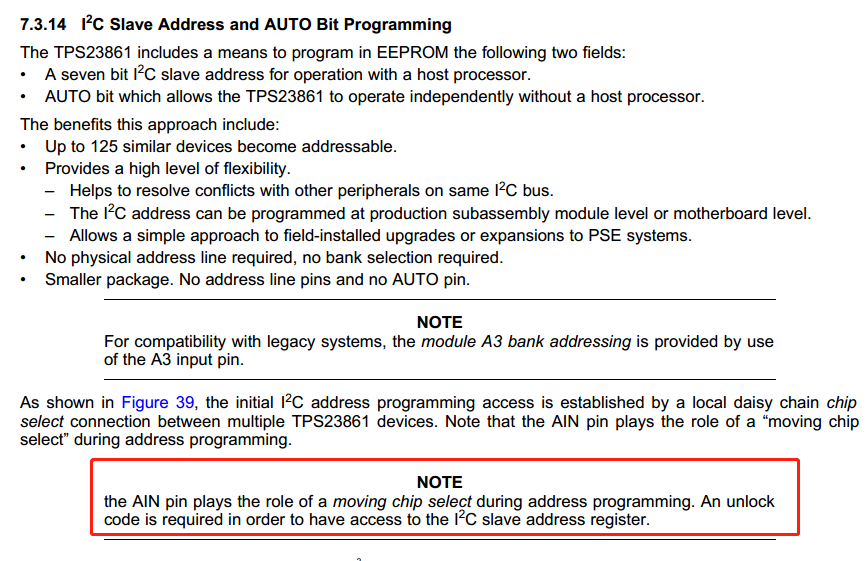Hi TI
We have made an 8-port POE module with 2PCS TPS23861 chip.
We want to achieve two TPS23861 cascades by changing the circuit. The circuit has made the following changes:
1. The 25PIN of the first TPS 23861 is suspended. Because of its internal pull-up voltage, the AIN is high level.
2. The 23PIN of TPS 23861 is connected to GND.
By changing the circuit, software engineers can only read one piece of TPS 23861 through IIC at present.
Now I don't know if there is a problem with the circuit modification or if the software needs to be adjusted. Please give me some suggestions.
Thank you.
Jerry





